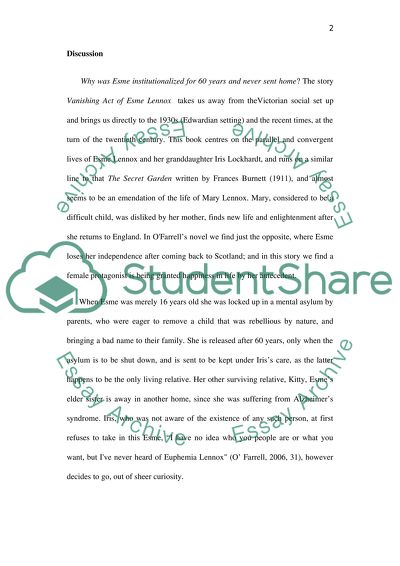Cite this document
(“The vanishing act of Esme Lennox and the plight of Edwardian women Essay”, n.d.)
Retrieved from https://studentshare.org/literature/1573511-the-vanishing-act-of-esme-lennox-and-the-plight-of-edwardian-women
Retrieved from https://studentshare.org/literature/1573511-the-vanishing-act-of-esme-lennox-and-the-plight-of-edwardian-women
(The Vanishing Act of Esme Lennox and the Plight of Edwardian Women Essay)
https://studentshare.org/literature/1573511-the-vanishing-act-of-esme-lennox-and-the-plight-of-edwardian-women.
https://studentshare.org/literature/1573511-the-vanishing-act-of-esme-lennox-and-the-plight-of-edwardian-women.
“The Vanishing Act of Esme Lennox and the Plight of Edwardian Women Essay”, n.d. https://studentshare.org/literature/1573511-the-vanishing-act-of-esme-lennox-and-the-plight-of-edwardian-women.


